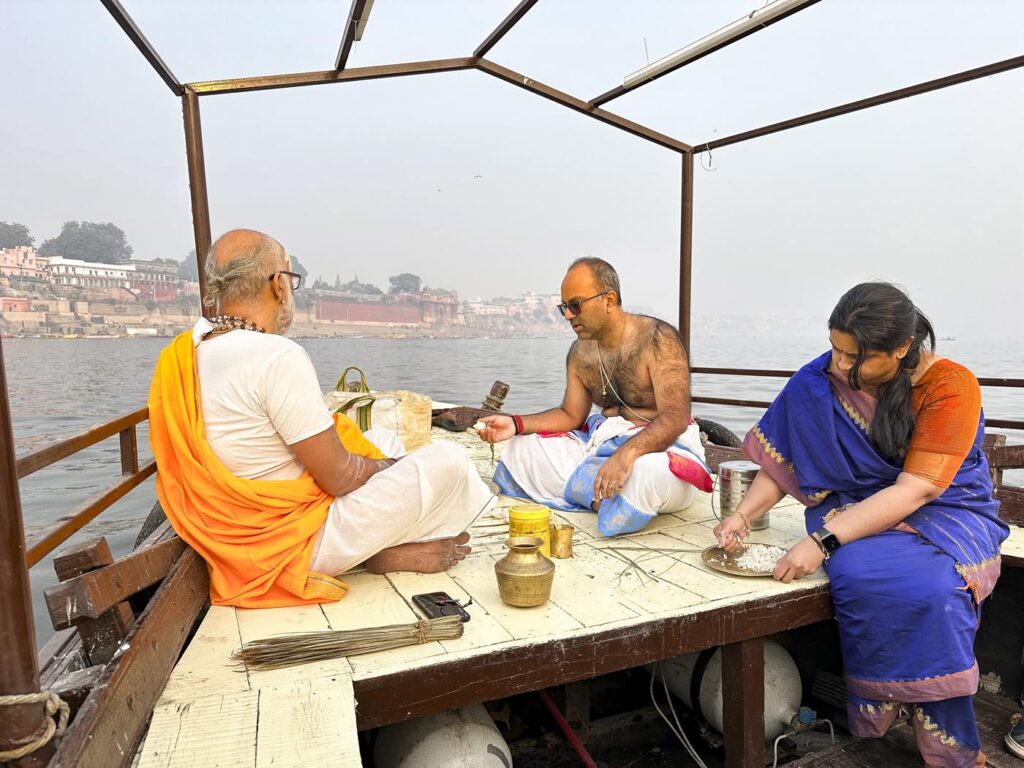A year after his passing, my family traveled to Varanasi to visit the famed Vishwanath Temple and ceremoniously deposit his ashes in the Ganga River
By Krathu Sankaranarayanan
Last winter my family traveled to the holy city of Varanasi in India. This was a significant trip for us because it marked the one-year death anniversary of my late grandfather. It was also the first time that my American cousins would visit India. After a nearly 24-hour journey from Houston, we got to our first stop in India: Chennai, Tamil Nadu. My family and I stayed with my maternal grandfather, waiting anxiously for our visit to Kashi, as Varanasi is known. We left Chennai around noon and touched down in the holy city later that day. This part of the trip was important for me because it was also the first time that I visited any place outside of Tamil Nadu. My excitement could not be contained.
My first impressions of the city were noteworthy, as it was nothing like I had ever experienced before. The city was different from any other South Indian city. The hustle and bustle of Varanasi was a constant stimulation of the senses for me. It was loud. There were people everywhere. But the city somehow maintained a spiritual touch in almost every aspect of its core. I saw pilgrims across the city from all parts of the world, a unique experience for me coming from the USA. Colorful murals of Gods and Goddesses dotted the walls of every alley and fence. Each mural depicted visual elements from Hinduism. This reminded me of the murals in Chennai, which depict things from all parts of Tamil culture.
Shortly after landing in the city, I was reunited with my cousins, Ava and Luci, and my paternal grandmother whom I call Patti. After meeting with the rest of my family, we took an auto to our first stop, the Kashi Vishwanathan Temple, one of the most iconic temples in the world. I was ecstatic to visit such a holy place. To get inside the temple required a long procedure, including taking identification and going through security, almost like at an airport. After entering, I was astonished to see how it looked on the inside. The temple had experienced sweeping developments in the last few years, with a large renovation project occurring that transformed it from a small mandir to the remarkable place of worship it is today.
My grandmother recalled the time when the temple was “the size of our living room” and could barely accommodate the number of devotees that would come. After hearing about these large renovations, I asked various parties what they thought of the project. Our tour guide, Moluji, said, “I am very happy to see that this temple is more prominent in Kashi, receiving the recognition it deserves.” Having a tour guide in Kashi is a must, especially if you’re not from North India. As I mentioned before, Kashi is a loud place with lots of people. It is very dense and many of the temples are tucked in alleys, away from the main road. This makes accessing them difficult for people who are not from the city, making a tour guide very helpful.
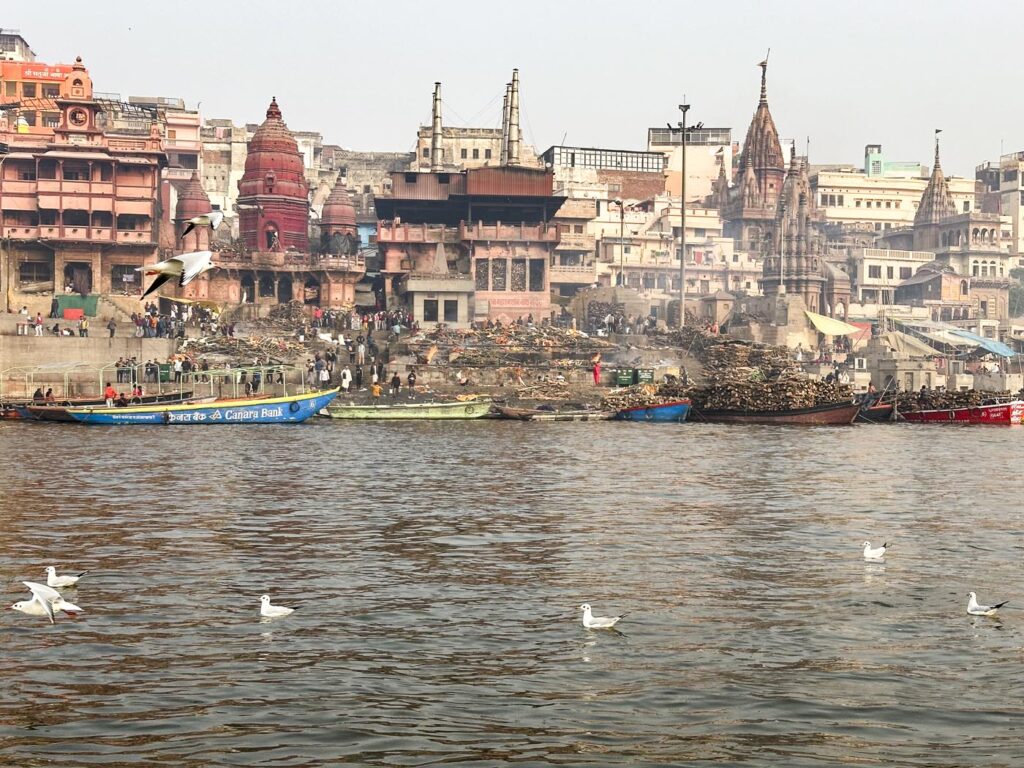
Compared to many South Indian temples I have visited, the mandir was much more open on the inside. The temple was very well maintained and there was no trash or even dirt in sight! The white tiled floors welcomed me into the abode of Shiva and my excitement could not be contained. We visited each golden mandapam featuring a different Deity, taking the blessings of the Gods and Goddesses at each stop. My cousins were especially amazed as it was their very first time visiting India, stating that they had never seen something like this before. It was a unique experience for us all, giving us a change in scenery and perspective. After visiting the Kashi Vishwanathan Temple, we went back to our hotel and ended our day there.
The second day of our Kashi trip had the most things planned for it. We began the day bright and early, maintained a fast and headed for the Hanuman ghat on the Ganga river. Hanuman ghat differs from other ghats because of the surrounding area’s large South Indian presence, contrasting with the predominant North Indian influence in the area. As we headed to the priest’s house, the area around me began to look more and more familiar, as the style of temples resembled that of South India and I could hear Tamil being spoken. The first thing we had planned today was the long-awaited remaining death rites for my late grandfather. This was an emotional time for my entire family, as it marked the dissolution of Thatha’s ashes into the Ganga and a final death rite for him. We performed a long karyam with the priest in his house, which took around four hours, and then headed to the Ganga River to spread his ashes. The walk from his house was an emotional trek, with many heartfelt remarks and hugs exchanged between us all. After reaching the Ganga, we boarded a boat along with the priest and began the pindapradanam, where my mother made rice balls which were dropped into the water as an offering to my grandfather for nourishment. After these rice balls were placed into the holy river, we braced ourselves for the final task on the boat, which was spreading his ashes into the river. As my father and the priest chanted mantras for protection, my uncle poured the ashes into the river. This was a sorrowful moment for us all; however, it provided my family the well-needed closure. Tears were exchanged, but the thought of our Thatha being in a better place among our ancestors comforted us all.
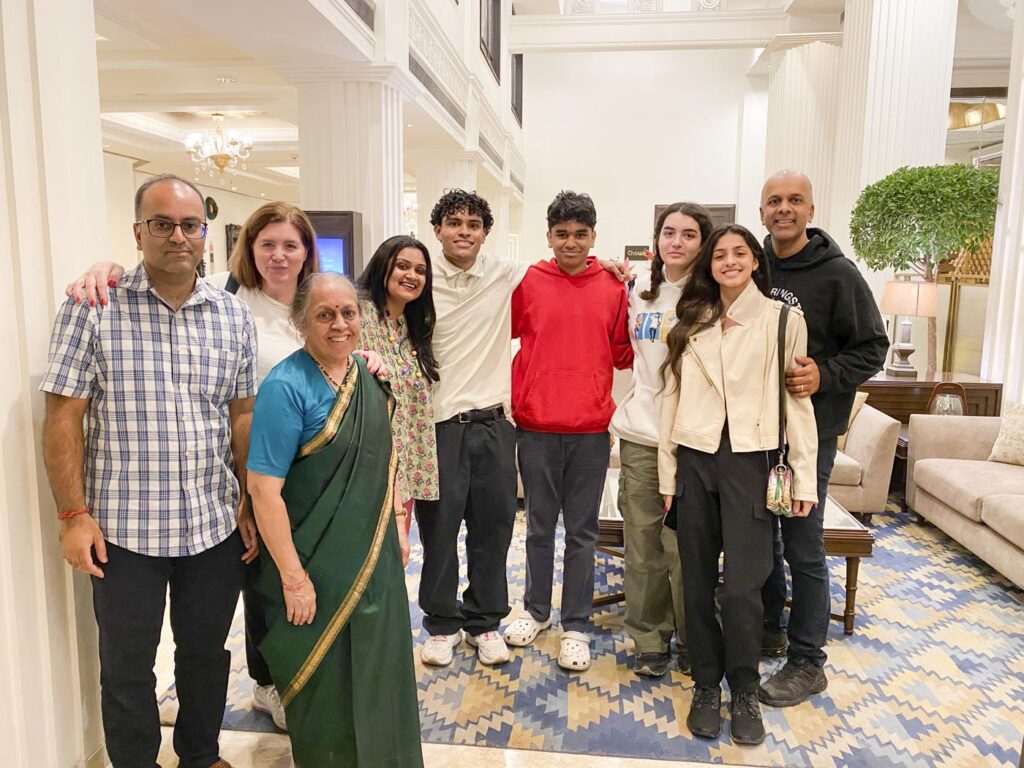
Soon after this, we reached the Manikarnika cremation ghat. Passing this ghat was a distinctive sight for my cousins and me. Growing up in the Western world, death is viewed as almost a private affair, where people offer support and space to people suffering a loss in their family. When my grandfather passed away in The Netherlands, we held his funeral and memorial with friends and family in the area. The event we had for my grandfather was a humble affair, and people preferred to give my family space during this tough time for us. Many people from my grandfather’s family were unable to attend due to their residing in India.
This contrasted with the culture of death in India, where it is viewed as another part of life along with birth. People treated funerals not solely as a ceremony of death, but as a celebration of life! Sadhus covered in vibhuti with long dreadlocks meditated along the steps of the ghat as families mourned and cremated their loved ones. An ashy smell filled the air, complemented by the fresh morning breeze, contributing to an overall renewing atmosphere. My cousins and I came to the general consensus that we all had somewhat of an uneasy feeling while passing this area. Maybe it was that we were still processing the loss of our grandfather, or that seeing others grieve the loss of their relatives made us low spirited–but overall we had a strange feeling that we could not come to the bottom of. Despite this, there was still a bittersweet feeling remaining in all of us. Seeing the sadhus meditate on the banks of the Ganga reminded me of the spirituality and the holiness of the area. The energy uplifted my spirit and helped give me true closure, reminding me that nobody can escape the cycle of life and death.
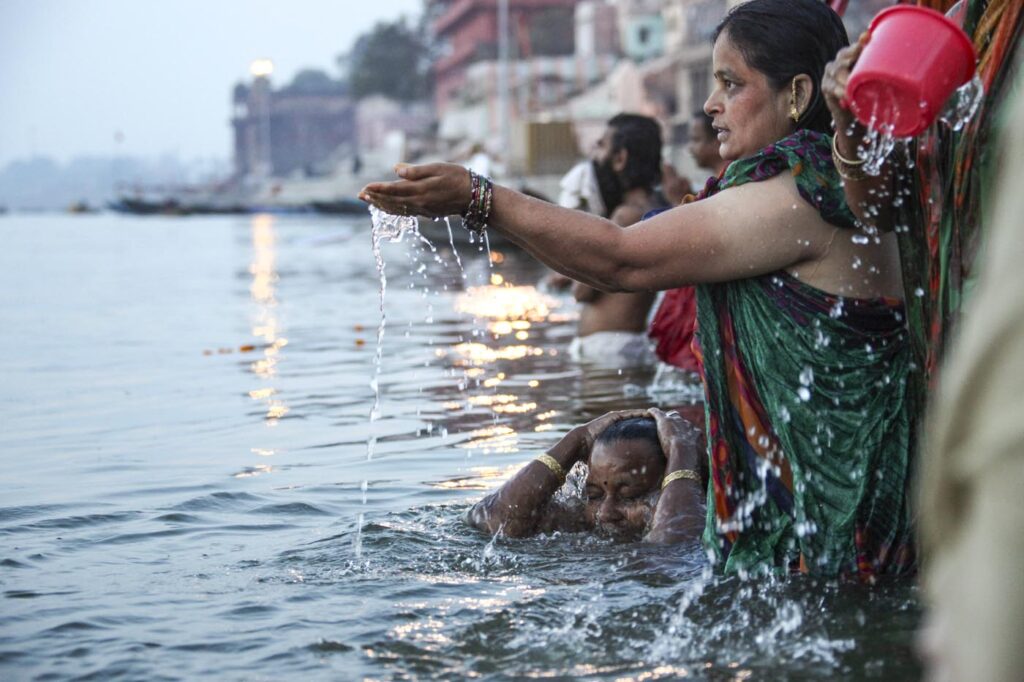
Following this, the boat docked right where we started, and we got ready to take a dip in the river. At this time in the year, the Ganga was freezing cold, but there were still many local people coming and taking bath in the river. Because of the temperature, there were not nearly as many pilgrims in the area, allowing us to take a more leisurely approach to bathing in the river. I changed my clothes quickly and watched as my father, mother, and brother all seamlessly swam into the river. I, however, had strongly underestimated the actual temperature of the water and thought that it would be much warmer than how it actually was. Coming from Houston, most bodies of water that I swim in are at least 80 degrees, so when I first got into the river, it was definitely a shock. I began by slowly entering before quickly realizing the sheer frigidness of the river. Immediately, I ran out of the water, as my cousin said, “screaming like a baby.” After overcoming my initial fear, I took the river head on and quickly submerged myself into the Goddess Ganga’s abode. The river was cold, but it provided its own warmth through the personal satisfaction it gave in its own unique way. I immersed myself from head to toe three times, with each time becoming easier than the last.
After exiting the river, it soon became apparent to me how badly people are maintaining her. It is such a shame that pilgrims from across the Earth come to take blessings from the Goddess Ganga, but still leave trash everywhere as if it’s nothing. I decided that this is nowhere near okay and filled up a small bag, along with my cousins, with trash collected from the river to dispose of properly. Hopefully, one day we can see an India where the Ganga is as clean as she deserves and rightfully should be. Because of this revelation, I decided to ask some people that were bathing in the river what they thought of this. I asked an older lady named Gayatri who commented, “It is horrible the way people treat the Ganga. Devotees come from all across India and perform various rites, taking the blessings of the Goddess. Rather than cleaning up after themselves, they throw any trash they have off the boats they are on into the water, polluting the local ecosystem. It has gotten so bad that you barely see any fish or marine life that once inhabited the area. How can people think this is okay to do?” After this insightful conversation with her, we headed back to the hotel to rest up for the remaining part of the day we had ahead of us.
The next stop in Varanasi was visiting some smaller temples in the area, starting with the Kalabhairava Temple. As an animal lover, I was really looking forward to visiting this temple because Kalabhairava (a form of Siva whose vahana or mount is a dog) has always been one of my favorite Gods. I love Him so much that I even named my dog after Him, Bhairavi.
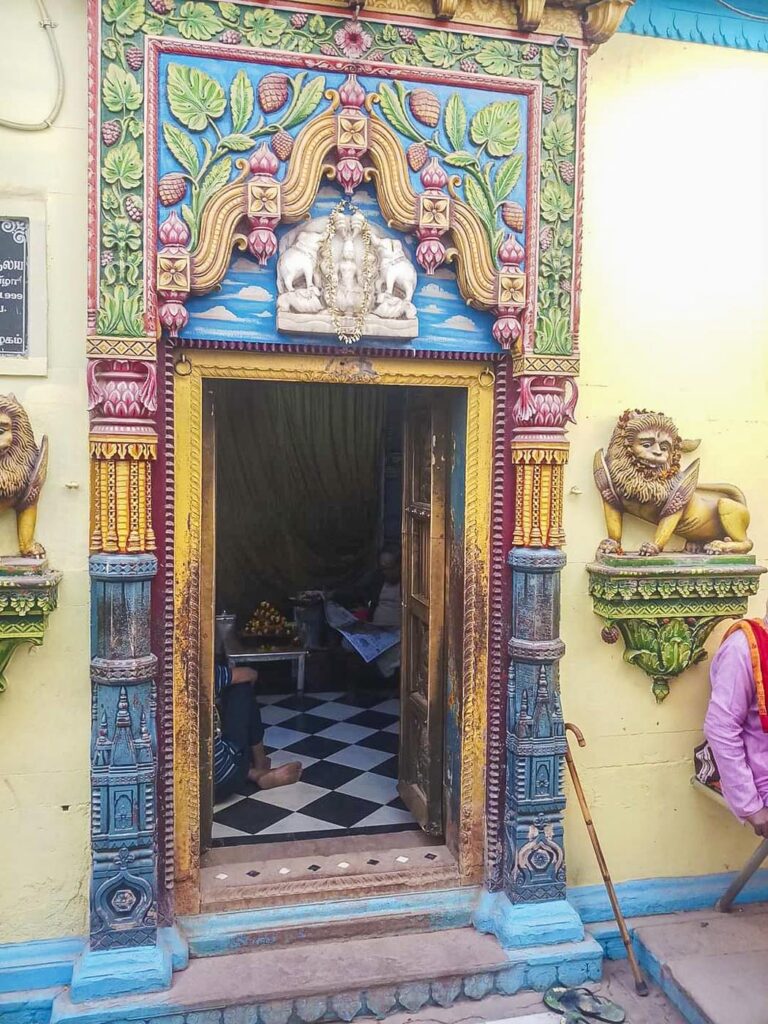
The temple is located in the heart of inner Kashi. Getting there was a lot different from how it was when we visited the Kashi Vishwanath temple, which was easily accessible but had lots of security. Getting to Kalabhairava Temple involved going through many tight and crowded alleyways before even seeing the entrance of the mandir. With my grandmother, this was a bit of a challenge, but with Siva’s grace—and a God-sent rickshaw driver—we were able to make it in time. This temple again was a lot different from anything I had ever seen before. It differed from the large South Indian temples I had visited prior to coming to Kashi.
Passing through the crowded alleyways was a new experience for me; however, it was nostalgic for my New York cousins. It brought them back to the time when they would pass through Manhattan and other crowded parts of that city. After going through all the chaos, we finally reached the temple. We waited in a long line to enter, and finally I was able to see my beloved Kalabhairava.
The inside of the temple was small and filled to the brim with devotees. We did circumambulation and took the blessings of Kalabhairava, after which we participated in a rather unusual ritual. On the side of the temple there is a priest who, before giving you a rudraksha bead (sacred to Siva), will hit you lightly on your back. I was not informed of this when I arrived, so it was a bit of a shock initially. The priest, after tapping you on your back, ties the bead very tightly onto your arm. This practice is done to quite literally “shake away” any bad omens and energy that you may be possessing. Though it hurt a little bit, I was delighted to know that any bad energy was removed from my spirit.
Next was the Vishalakshi Temple, last on our list. It is a special blend of North and South Indian architectural styles, reflecting the temple’s unique origin story. Despite being geographically located in North India, it was built by Tamils and is one of the most important temples for the Tamil community in Kashi. The three main Goddesses that are worshiped by Tamil people are Meenakshi (whose main temple is in Madurai), Kamakshi (whose main temple is in Kanchipuram), and Vishalakshi here in Kashi. Each of those temples is one of Hinduism’s 51 revered Shakti Peetham temples.
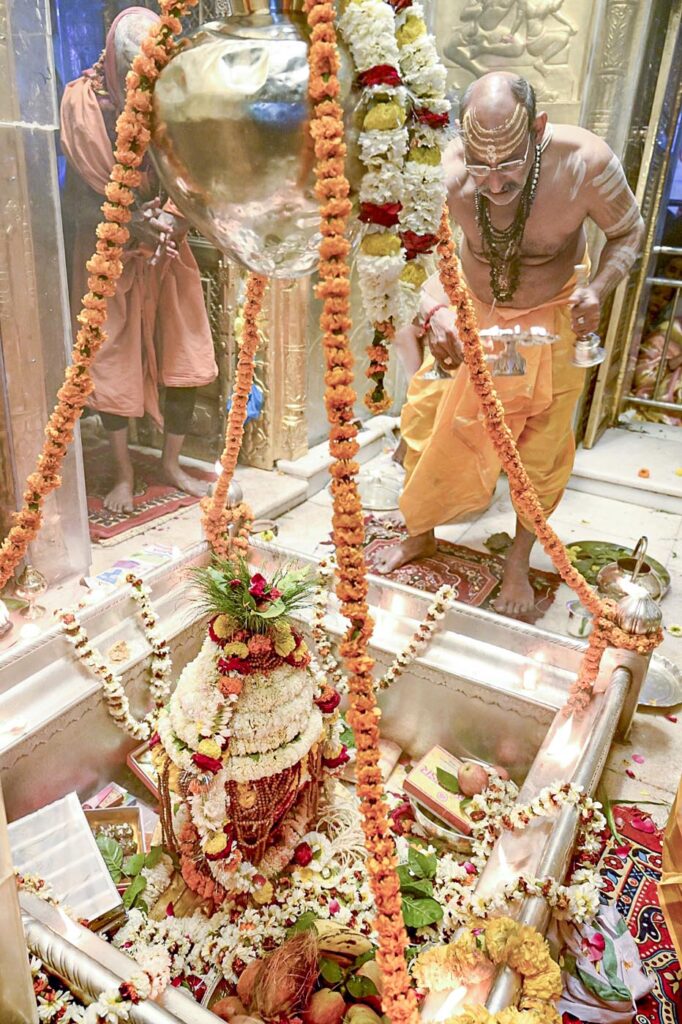
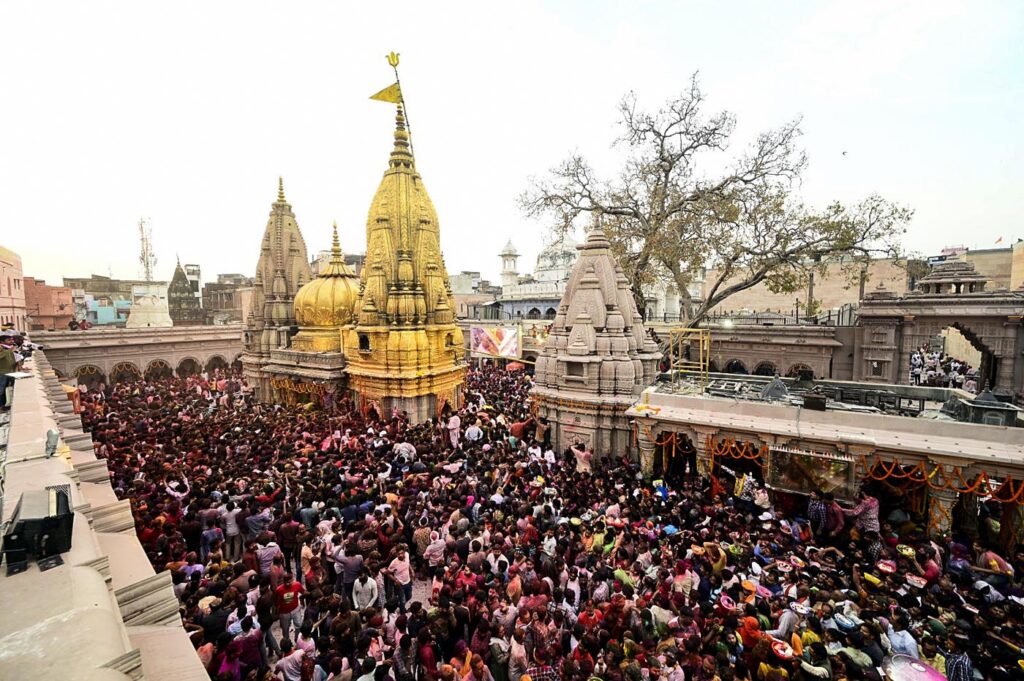
The temple blends in with its local surroundings, only being distinguished by its entryway arch. Upon entering, I quickly noticed the Tamil influence in the temple. I was greeted by the beautiful and colorful arch featuring many symbols that you see in Tamil Nadu. It reminded me of the gopurams, entry towers, that you would see on any temple.
We did the usual procedures that one would do in any temple, including placing money into the offering box and taking the blessings of the Goddess there. Additionally, my mother was able to talk to the priest and actually got us the opportunity along with my cousins to help perform the abhishekham, sacred bath, for Vishalakshi.
This really tied the whole trip together for my cousins and me because for most of the trip it was just us watching the priests do everything, and we would just take in the blessings. This made me feel much more satisfied and fulfilled about my whole experience, allowing me to truly take in the blessings of my beloved Vishalakshi. We ended our day by eating dinner at a restaurant along the Ganga, and finally going back to our hotel to rest.
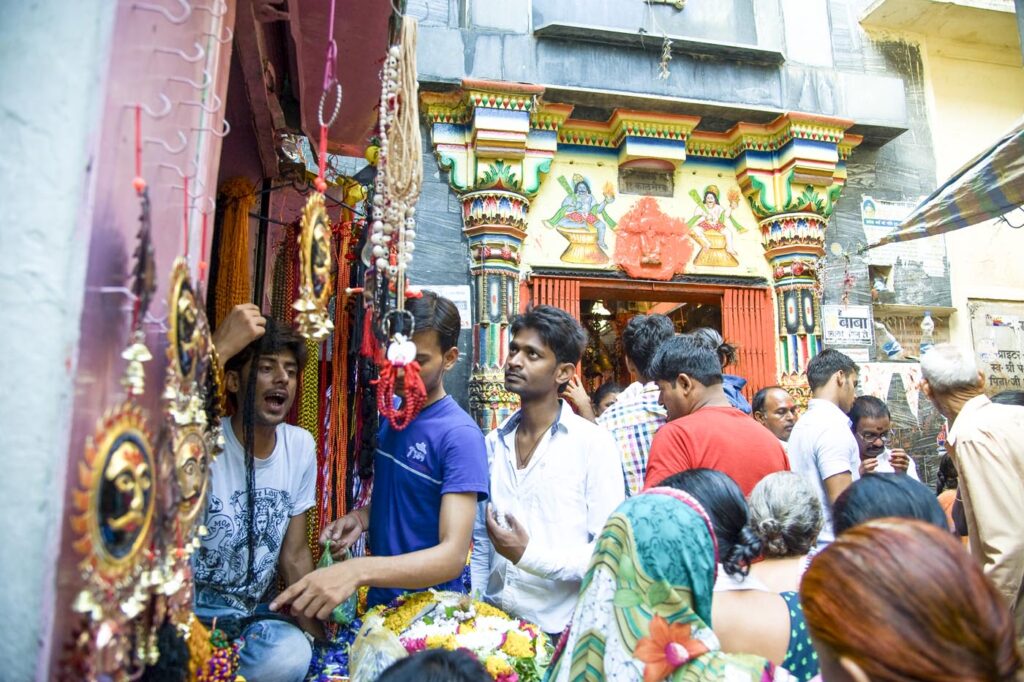
Though my visit to Kashi was short, it was one of the most fulfilling and fun trips of my life. I got to bond with my cousins and share such a special trip with them. Many tears and laughs were exchanged across the duration of this visit, and we saw many special things. It was a welcome change in scenery from the green, coconut-tree-filled and humid South India. I thank God everyday that I was able to visit this holy city in India and experience the things that I did, and I cannot wait for my next visit.
About The Author

Krathu Sankaranarayanan is a 10th grader at Ridge Point High School in Missouri City, Texas. He enjoys debating, politics, volunteering and learning new languages and cultures.
